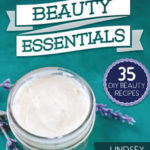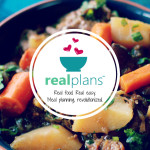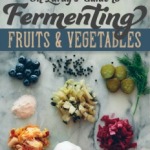Today I have a guest post for you from Sita at Real Food Suomi. Remember I am busy pulling together an ebook cookbook based on all of your requests so for the next few weeks I have some amazing guest posts lined up for you!
I’m very happy to be guest posting here at Homemade Mommy and sharing with you how to make ghee – a task that is incredibly easy and will help you incorporate a healthy and delicious fat into your diet. Later on my blog Real Food Suomi I will be posting an article on ways to use ghee that go above and beyond the common use of frying and sauteing.
First of all, what is ghee? Ghee is a traditional cooking fat from India. It is the result of heating butter on the stove and removing the impurities and milk solids that rise to the top in the form of foam and fall to the bottom like crumbs. What’s left is a deliciously golden substance that has a flavor unique from butter and also has a higher smoke point and is easier on the digestion (due to the removal of the milk solids). It is popular in Indian cooking, but it is becoming more well known as a cooking fat all over the world. It can be used medicinally as well, which I will describe later in a post on my blog.
I grew up in a kitchen that always had great big glass jars full of ghee near the stove ready to use for frying. I fondly remember making the ghee as a kid. I remember scraping off the foam that would rise to the top and enjoying taking in the beautiful and rich golden color of the finished product once it was poured into the clean glass jar. Although I grew up cooking regularly with ghee, once I left home for college my eating and cooking habits changed and I lost touch with this excellent fat. I was reminded more recently that ghee is a very stable fat for cooking by re-reading Nourishing Traditions by Sally Fallon. Not only is it stable for cooking, but according to Ayurveda ghee is also excellent for digestion, as it stimulates the digestive fires better known as agni.
Making ghee is simple. You need some unsalted butter, a pot, cheesecloth and a spoon, and a bit of time. Of course the more butter you are using the longer you will need. I usually do 1 kilo (2.2 lbs.) of butter at a time and the process takes about 1 hour.
How to make ghee
Ingredients:
unsalted butter* – start with 500 g (or 1 lb of butter) if you are just learning. Otherwise you can make larger amounts at one time.
Equipment:
Medium or large pot (depending on amount of butter)
cheesecloth
Large metal spoon
Clean and dry glass jars for storage
1. Melt the butter over medium heat in the pot.
2. Once melted the butter should start to bubble and sputter. Lower the heat so it doesn’t burn but not so low that it stops bubbling. Note that using a larger pot will help stop the butter from sputtering out all over your stove area.
3. Foam will rise to the top. You can stir occasionally to prevent burning and to check the progress. It is not necessary to scrape the foam off during the cooking process, and in fact I have read from Ayurvedic literature that the foam has medicinal properties. It will be strained off later using cheesecloth.
4. After some minutes it will start to have a nice popcorn-like smell and a whitish substance will form on the bottom of the pan. Use the large metal spoon to occasionally pull back the foam on the surface. When you can see all the way to the bottom of the pan and the white curds at the bottom start to turn brown, it is done. 
5. Remove the pan from heat, let cool so it’s just warm (still liquid) before pouring into the jars.
6. Pour through cheesecloth into jars. The ghee should be a beautiful golden color with no whitish bits. Discard the brown curds from the bottom of the pan. When cool close the jar with the lid and store the ghee at room temperature. The ghee will be solid at room temperature. It keeps for many months as long as no water is allowed to get into the container.
Now use the ghee for frying, sauteing, and deep frying. If you’d like to learn about other ways to use ghee (besides cooking) and its benefits, look for related articles on my blog Real Food Suomi coming up soon.
Need to try it before you commit to making it? Buy quality ghee here.
*I live in Finland and it is not possible to buy unsalted butter here. I do successfully make ghee with salted butter but it should be made from unsalted whenever possible.
 Hi! I’m Sita, and I consider myself a graduate student by day and a food activist by night. I am an American living in Finland who enjoys learning about food, nutrition and health and using social media to be a voice for food and health freedom. I blog about these topics and what it’s like to be a real foodie in central Finland at Real Food Suomi.
Hi! I’m Sita, and I consider myself a graduate student by day and a food activist by night. I am an American living in Finland who enjoys learning about food, nutrition and health and using social media to be a voice for food and health freedom. I blog about these topics and what it’s like to be a real foodie in central Finland at Real Food Suomi.

















How does using salted butter change the ghee for the worse? And, when cooking with homemade butter made from raw milk versus ghee made from raw milk butter what are the differences? Thank you for your help!
How long to you simmer it? I’ve tried do to it for short and long periods. I find when I do it longer it’s “smoother” and shorter it’s “grainier.” I’m curious – do you go based on time or when the bubbles start to diminish with simmering? Can you give me a sense of when you know it’s done?
How much ghee do you end up with, if you start with one pound of butter? Is there much loss in volume? Thank you for these great instructions!
I tried making some for the first time today, but my ghee is completely cooled in the jar and still liquid! Any ideas from anyone about what went wrong?
I used this recipe to make ghee for the first time yesterday and it turned out great! Thanks!
Awesome Hannah!
You mention the foam has medicinal properties. What do you do with the foam after?
Write more, thats all I have to say. Literally, it seems as though you relied on the video to make your point. You definitely know what youre talking about, why waste your intelligence on just posting videos to your site when you could be giving us something enlightening to read?|
THis is not ghee, well not the real traditional ghee, like made pure way from India for example. This technique above is more like how to make clarified butter. Ghee is different and is very healthy and beneficial. Here is an example of how it is made:
How to make ghee procedure:
1) Get raw milk.
More info on Zebu/Cebu breed here: http://mgdas.com/2010/04/vedic-cow/
2) Boil the milk
3) Add curd once it cools down to 110ºF/44ºC. Half a table spoon per liter.
4) Wait 8+ hours for curd to form. Leave it in a warm place
5) Churn curd. Important: It must be in between 60 and 70 degrees farenheit, it will vary according to seasons and the milk consistency.
Make your own butter churn video:
http://www.youtube.com/watch?v=YD8ajJ…
If you can’t make your own churning machine, or for small batches, you can purchase the one in the video at:
http://www.amazon.com/MANUAL-CREAM-SE…
Warning: Don’t use blender because it will heat up the curd because it only rotates in one direction.
6) Skim the butter. Add cold water to make separation easier. You can offer the buttermilk to Kṛṣṇa by adding a little sugar and Tulasī leaf.
7) Make ghee. Heat up in pan slowly, remove foam on top, and take out of heat when ghee is clear and before solids burn. Filter through a coffee filter.
8) Offer to Kṛṣṇa
Marcy, I have one objection in using raw milk for this process. Not all of us and actually probably most of us do not have our own herd, and spend about $15 for a gallon of raw milk. The health benefits of raw milk are more important to me then using it to make anything that needs heating.
I would much rather buy a less expensive, high quality organic pasteurized milk from a grass fed local source for cooking.
Raw milk is not only hard to find for most people, but also very expensive. I for one am not willing to use my raw milk, raw butter or raw kefir for anything that includes heating it. I grew up on a farm where getting these products was not a problem. You could use raw milk for everything, but most of us don’t have this option and I feel lucky to be able to get our raw milk products.
Maybe when the government becomes more lax on the rules governing the farms from selling raw milk, it will become more affordable and we will be able to use heat processes that negate its raw benefits, until then I will not be boiling my raw milk or heating my raw butter.
I am learning to eat better.
Unsalted butter adds an extra ingredient (can’t remember what it is) that I didn’t think was a necessary or healthy additive, although I could be wrong… I always purchase salted for that reason because of that extra ingredient in unsalted. What are your thoughts on that?